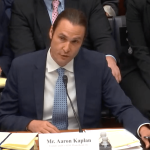As the largest publicly traded crypto exchange in the United States, Coinbase has become something of a household name. But as the going gets tough in the crypto markets, the company seems to be fumbling the bag, leaving it vulnerable to competition.
Coinbase’s stock price is down nearly 80% from where it started the year and it recently made headlines for laying off one-fifth of its staff. The company posted a $430 million loss in the first quarter of 2022, underperforming Wall Street analysts’ expectations. Its trading volumes and number of monthly transacting users were both down from Q4 last year — bad news for a company that depends heavily on transaction fees for its revenue.
The exchange got over its skis quicker than even Coinbase itself probably imagined, a point evidenced by its decision to rescind job offers last month from candidates who had already accepted them. Its competitors, though, have been lying in wait for their moment to close in on the U.S. market. Now, sensing Coinbase’s moment of weakness, the two largest crypto exchanges in the world by volume (Coinbase is third globally) — Binance and FTX — are hoping to seize their opportunity stateside.
The three crypto giants all have different established customer bases and are trying to steal each other’s market share. Retail investors comprise around 95% of Coinbase’s transaction revenue, according to its latest quarterly filing. FTX, in contrast, already has a strong institutional trading business anchored in its founder and chief executive Sam Bankman-Fried’s background working at a quant hedge fund.
SBF, as he’s known in the crypto world, has been pulling out all the stops to gain retail customers, including introducing zero-fee U.S. stock trading in May, to try to turn FTX into a one-stop shop for the retail investor’s needs. After all, if Coinbase ascended to the No. 3 spot buoyed almost entirely by U.S. retail investors, its decline presents a valuable opportunity for global, institutionally focused exchanges to poach its users and boost their own trading volumes.
It makes sense, then, that Binance has its sights set on luring more retail investors, but the largest global exchange is still a bit of a dark horse in the race for the U.S. market as it battles against FTX for customers. Its Binance.US division saw spot trading volumes below $300 million as of July 12. That’s a drop in the bucket compared to its global business, which saw volumes of $10 billion for the same period — about seven times higher than volumes at both FTX and Coinbase.
Today, 70% of trading volume on Binance.US, the American offshoot of the global exchange, comes from institutional customers, its CEO Brian Shroder told TechCrunch in an interview. Still, retail investors bring in more revenue overall, in part because of the steep discounts Binance.US offers to its highest-volume customers, he added.
Binance is also taking a markedly different approach from FTX in luring U.S. retail investors, focusing on its core competency in crypto.
“Some exchanges want to go back to stock trading and target that market. That’s, again, not a wrong or right approach. We are a pure web3 company. We’re not going back; we’re moving forward. We want to build more web3 tools,” Binance founder Changpeng Zhao told Decrypt in an interview this week.
The exchange is also taking a less flashy tack when marketing in the U.S. While other competitors including Coinbase, FTX and Crypto.com were spending millions of dollars on Super Bowl ads during the crypto bull run, Binance.US stayed relatively quiet.
Under Shroder’s tenure, Binance.US seems to be reversing its reputation, once marred by rapid management turnover and ongoing regulatory battles, and pulling ahead in the fight to win over the U.S. retail investor. From a customer perspective, its strategy is undeniably appealing — undercut competitors by offering lower fees.
Coinbase’s fees are notoriously high at up to 3.99% for certain spot trades compared to FTX.US, which charges up to 0.20%. Binance.US, meanwhile, reaffirmed its commitment to keeping costs low for its customers last month when it launched fee-free bitcoin spot trading for all users, saying it is the first U.S. crypto exchange to have done so, though it’s worth noting that exchanges still make money from the spread on trades even if they don’t charge an upfront fee. It also rolled out a staking product last month that it claims provides some of the highest APY rates compared to its competitors and said it plans to add fee-free trading for more currencies in the future.
“On the cost side, it is unquestionable that we are the lowest-cost provider in this space,” Shroder said.
When asked about how Binance.US is able to provide above-market yields from its staking product, Shroder’s response was: “My guess is that when you look at the other firms having much lower APYs, it’s just that they are taking that themselves, and we are passing it on to the customer.”
Naturally, investors gravitate toward lower fees and higher returns, giving the deep-pocketed Binance a potential advantage over Coinbase in that it can afford to sacrifice profits in the U.S. to attract users as long as it makes them elsewhere. The same goes for FTX, which is able to offer no-fee equity trading only because it’s making money in other parts of its business.
Customers have shown enthusiasm for Binance.US, although investors, at times, have seemed more hesitant. Still, this April, the company was able to raise its first external funding from investors in a $200 million round valuing it at $4.5 billion. The fundraise marked a crucial first step on its path to an IPO — a milestone Shroder told TechCrunch he sees happening in the next two to three years.
Armed with the new cash and an extension to the round that Shroder says is coming soon, the company seems well positioned to weather a choppy market. It is actively hiring for 80+ new roles to add to its current employee base of ~400, TechCrunch reported last month.
“What I experienced at Uber, I’m living through again”
Despite Binance’s recent efforts in the U.S. market, its messy history with local regulators makes it easy to underestimate. The company is currently under investigation by the U.S. Commodities and Futures Trading Commission for allegations that it engaged in market manipulation. The U.S. Justice Department and IRS are also reportedly examining whether the exchange engaged in money laundering and tax evasion.
For context, Binance.US launched in 2019 as a standalone entity that licenses its branding and core technology from Binance itself. Zhao is said to have spun off the division in a bid to appeal to U.S. regulators who refused to greenlight the global exchange.
Zhao still wields significant influence over the U.S. exchange today as a major shareholder, although he told Decrypt this week that Binance “is no longer top-down driven” by him. The New York Times reported last August that Zhao held 90% of Binance.US shares.
Zhao’s ownership stake, according to the Times, became a sticking point with outside investors when former Binance.US CEO Brian Brooks tried to raise a venture round for the company as a step to an eventual IPO. Brooks ended up leaving the company just three months after taking over the top job, perhaps in part because the deal fell through.
Brooks isn’t the only top exec at Binance.US who has left unexpectedly. The company’s founding CEO, Catherine Coley, left the company so quietly last May that numerous unconfirmed rumors began swirling regarding her whereabouts. Last October, when Shroder took over the company as its next permanent CEO after Coley, Binance.US’s founding CFO Joshua Sroge made his exit. Last week, after nine months of searching, the company finally filled Sroge’s role, appointing former Acorns exec Jasmine Lee as its new permanent CFO.
In addition to its troubles in the U.S., Binance has also faced heavy regulatory scrutiny in Japan, the EU, Germany, Thailand and other regions. Shroder, who previously led Uber’s Asia-Pacific strategy, likened the exchange to the controversial ride-share startup.
“What I experienced at Uber, I’m living through again,” Shroder said. “When I was at Uber, we were bad boy No. 1, you know? We were the big bad guys picking on the taxi industry and hurting the taxi employees and things like that.”
“What was true about Uber is also true about Binance, globally, and then Binance in the U.S., which is that basically there was an entrepreneur who had an innovative approach to expanding technology that has never been contemplated by regulators,” he continued. “To support that, the regulators had to play catch-up to the technology, and I think that’s exactly what we’re experiencing now in the crypto space.”
Shroder is determined to shepherd Binance.US to its longstanding goal of going public, a milestone he believes it will achieve in the next two to three years. He said Binance.US is strong enough to continue growing even amid tough market conditions, citing the firm’s plans to hire some employees who were let go by Coinbase and competing crypto exchange Gemini as evidence that his company is better positioned for the challenges ahead.
“Coinbase and Gemini have multiple products and services, and they have them out there; they’ve been out there for a while. We historically have only had spot [trading] up until really this [quarter]. So as we add more products and services, which we have a very aggressive roadmap to do, we require more products and tech talent; we require more operations people to actually run those new business units. With the infusion of capital that we just got from our very first seed round, we’re taking all the funding, and we’re plowing it back into growth,” Shroder said.
Only time will tell if Shroder’s ambitious plan will work, but he is determined to reshape the narrative surrounding Binance.US in the public eye. One of the biggest misperceptions the public has about Binance.US, he said, is around its “desire to be a fully compliant and regulated entity,” a goal Shroder said has been central to the company since its founding.
“In the vacuum of you telling your own story, your story is being told by your competitors, or your story is being told based on your click rate. And to the extent that negative headlines drive views more than positive ones, I think that that just creates a misperception in the market that is not based on reality,” Shroder said.
Powered by WPeMatico





